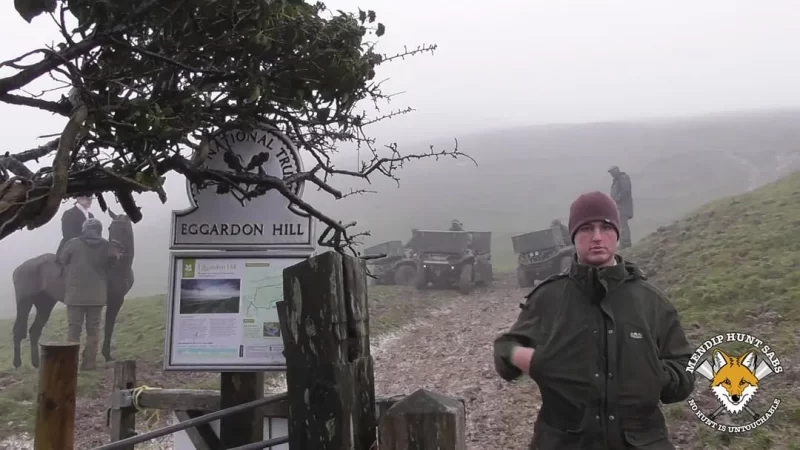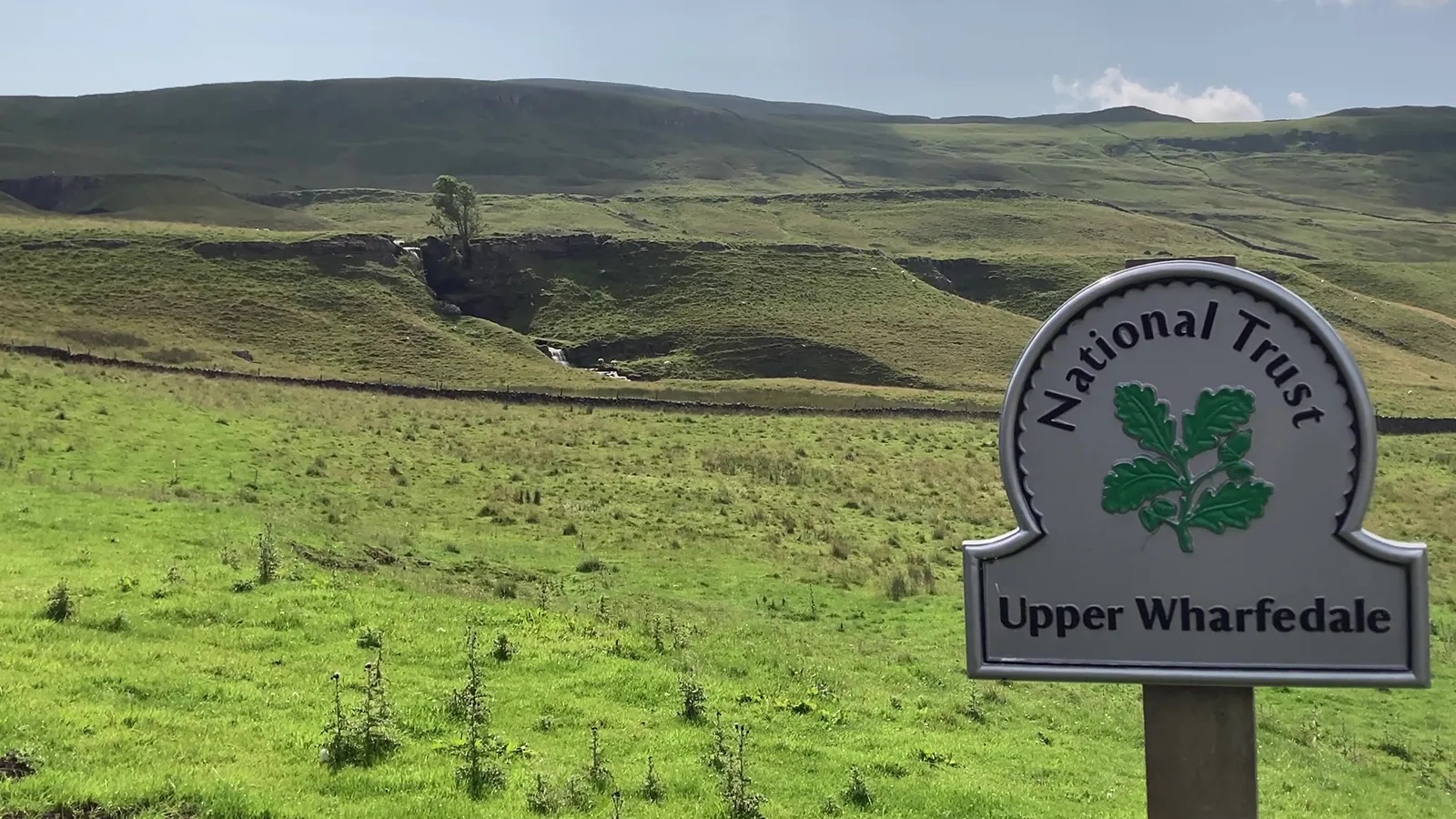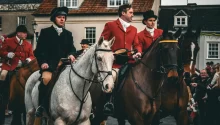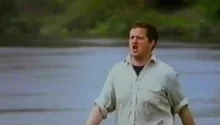The National Trust claims that they do not allow fox hunting on its land. They state that the “law does allow what is known as trail hunting to continue” although worryingly it seems the national Trust are confused as to what the law actually states. The Law unequivocally does not make any provisions for Trail hunting, it does not make the act of trail hunting legal nor an exemption under the Act. The National trust stopped issuing licences for any trail hunting activities.

The National Trust is the largest landowner in the UK and is responsible for managing 250,000 hectares or 620,000 acres of land. A motion to ban trail hunting on National Trust land which took place after the Hankinson trial finished had amazed 78,816 votes for a ban and only 38,184 to not.1 This ban follows the Natural Resources Wales another huge landowner banned “trail hunting” on its land.2
Before the National Trust outright banned “trail hunting” they did update the terms of its “Trail hunting” licenses. The rules included not allowing the scent in the trail being that of an animalbased scent, not allowing terrier men to accompany the hunt and the National Trust would publish the days in which the hunts would be “trail hunting” on their land. Although one can argue that this was certainly a good step in the right direction, its hard to establish how the National Trust would be able to enforce these. Certainly, having a total ban was the right decision.
Now that the National Trust has outright banned illegal fox hunting on its land, one must understand that any hunt that enters any National Trust land with the purpose of hunting would therefore be trespassing, as such the law on trespass must be considered. Trespass is not a criminal offence, but one of civil. This means that ordinarily the police will not get involved if a person or persons have trespassed upon private land. A trespasser will be told by the landowner that they are to leave. The introduction of the Police, Crime, Sentencing and Courts Act 2022 makes trespass, in some isolated cases and criminal offence. See also Section 68 of the Criminal Justice and Public Order Act 1994. For an offence of Aggravated trespass a person must be doing two things, firstly, they must be trespassing and secondly they must intentionally obstructing, disrupting, or intimidating others from carrying out “lawful activities”. In addition a senior police officer has the power to order any person believed to be involved in aggravated trespass to leave the land, if they refuse to leave after being ordered to by the officer or they return to the land to which they have been asked to leave within a period of three months, this can be an additional offence.
Now that the law is out of the way, lets take a look at evidence of hunts, illegally hunting on national trust land.
South Shropshire Hunt
South Shropshire Hunt Master, Daneil Cherriman. Cherriman was filmed on November 2021 trespassing and illegally fox hunting on National Trust land in the Long Mynd area of Church Stretton. His hounds had been seen catching the scent of a fox.3 At Telford Magistrates Court evidence was heard which was taken by members of the public who had been visiting the Long Mynd area at the time the hunt was taking place. They had witnessed Cherriman making “tongue rolling” noises to disturb foxes. Cherriman pleaded guilty to hunting a wild mammal with dogs, contrary to the Hunting Act 2004. The Magistrates fined him £607.
North Cornwall Hunt & East Cornwall Hunt Joint Meet
On Saturday 27th January 2024 the Kernow Sabs, Monitors and Animal Rights team had reported that the North Cornwall & East Cornwall hunt (s) joint meet which took place at Camperdown Farm, Bodmin Moor, had trespassed onto National Trust land.4
Cattistock Hunt & South Dorset Hunt Joint Meet
On the 25th of January 2024 the Cattistock and South Dorset Hunts joint meet were seen by the Mendip Hunt Sabs and North Dorset Hunt sab hunting on National Trust land. The field, hounds and quads were seen going onto Eggardon Hill fort.5
Blencathra Foxhounds
On Tuesday 30th January 2024 Blencathra Foxhounds were seen hunting on Lake District National Park land, Longlands Fell and Caldbeck Commons.6
Eskdale and Ennerdale Foxhounds
On Sunday 17th of December 2023, the Eskdale and Ennerdale Foxhounds were seen hunting on National Trust land, namely Boon crag farm and High Tiberthwaite farm both national trust properties.7
Melbreak Foxhounds
On 19th December 2023 the Melbreak Foxhouds were seen illegally hunting on National trust land, around the area of Loweswater.8

Warwickshire Hunt
On 24th October 2023 the Warwickshire Hunt were seen hunting on National Trust land, College farm, Farnborough.9
It is clear just from these examples that illegal fox hunting is still prevalent on National Trust land. Yet what is more concerning is that fact that hunts are doing this so blatantly. Some may argue that the National Trust has a hard time trying to monitor hunting on its land considering the amount of land that it has however, if the National Trust as it says it does, has a strong stance on not allowing illegal fox hunting on its land then it could take more stringent measures to enforce the rules and the current law.
On the other hand, the National Trust are certainly aware of hunts conducting illegal activities on its land. The Keswick Reminder had reported that a member of Cumbria Hunt Watch, had alleged that hunt packs were continuing to illegally trespass on National Trust land and private land to hunt. The Police and the National Trust had been made aware of these allegations. Clerk Becx carter of Borrowdale Parish Council had made contact with the National Trust and the police but had no received a response to the concerns that had been raised.10
The Question that comes to mind is what can the National Trust do to enforce and prevent illegal fox hunting on its land?
It is hard to find any information about how the National Trust deals with reports of illegal activity on its land. However, they make it clear that any validated reports of illegally activity are taken seriously. They state that any reports are to be passed on to the police directly. The National Trust seem to take a reserved standpoint when it comes to enforcing its rules and the Law. The all-too-common response on twitter is known by many who have reported and evidenced hunts hunting on its land. One such measure the National Trust could do to change the tides is to start to issue letters to hunts that have been evidenced hunting on its land, simple but often effective.
The National Trust could actively work with the Police to assist in charges against the hunts, although the police would not bring charges of trespass as it’s a civil matter, they certainly could for offences related to the Hunting Act 2004. On the other hand, the National Trust could look into requesting injunctions against hunts that regularly trespass on its land.
Injunctions
An injunctions aim is to stop a party from continuing in its conduct, in this case from continuing to trespass on land that it should not be on. An injunction contains a penal notice which if an affected person breaches the injunctions he or she is in contempt of court and can face very serious repercussions.
The type of Injunction that may be applicable to the National Trust is a Quia Timet Injunction. The objective of a Quia Timet injunction is to prevent anticipated infringement of a legal right occurring.
Before an Quia Timet Injunction can be granted there are a few hoops that one must go through.
In the case of Boyd v Ineos Upstream [2019] EWCA Civ 151, the Court made it clear that there must be a “sufficiently real and imminent risk of a wrong being committed to justify Quia Timet (anticipatory/pre-emptive) injunctive relief”.
Following the above case the Court had also stated that for an injunction to be granted against “persons unknown”, it had to completely impossible for the Claimant to name the persons (s) likely to commit the wrong, and possible to give effective notice of the injunction.11
An injunction could be made against the hunt club staff namely the hunts master, whipper in and the terriermen, but it may be possible to grant one against those “unknown” which may cover the hunt support and any riders who hunt.
The case of Leeds BV v Persons Unknown [2018] EWHC 2456 (Ch) if important to consider. The Claimant owned the former Tetley Brewery site in Leeds. There had been a number of incidents of trespass onto the site and, in 2018, unknown persons had triggered the alarms and illegal raves had taken place in the empty buildings on the site.
The Claimant wished to be proactive and wanted to take steps to prevent further instances of trespass.12 There were no particular named individuals identified. A question had arisen as to whether jurisdiction existed to grant an injunction in such circumstances. The answer was yes.
The Civil Procedure Rules provides three routes by which an unnamed/or unknown person could become a party to such proceedings:
1 – Where the particular person was identified but the name was not known,
2 – Where a person was part of a fluctuating class or group of persons some of whom were unknown,
3 – Where the identity of the defendant is defined by likely perspective acts of infringement of the order the court was being invited to make.13
Quia timet injunctions are a great remedy for landowners like the National Trust to make that fear there will be trespass and where there is substantial risk to their interests, and in the case the of the National Trust its members interest too.
In the case of Leeds BV they had sought a Quia Timet injunction because they feared of what would happen, they had anticipated an event taking place.
Further to the test above set out by the CPR, Mr Justice Smith explained that when considering whether to grant a Quia Timet injunction the court should follow the two stage test:
a) First, is there a strong possibility that, unless restrained by injunction, the defendant will act in breach of the claimants rights?
b) Secondly, if the defendant did an act in contravention of the claimants rights, would the harm resulting be so grave and irreparable that, nowithstanding the grant of an immediate interlocutory injunction to restrain further occurrence of the acts complained of, a remedy of damages would be inadequate?14
In relation to the first stage of the test, Mr Justice Smith had noted that it was relevant to look a certain factors, for example what other steps had the claimant taken or might take to ensure that an infringement does not occur. It is important to note that Leeds BV had taken considerable steps to prevent trespass but the issue was still prevalent.
In terms of the second stage of the test, Mr Justice Smith, had looked at what would happen if no Quia Timet injunction was granted, and as such how effective an immediate interim injunction plus damages would be as a remedy for the alleged infringement.
When applying the two-stage test Mr Justice Smith has concluded that there was a strong possibility that unless restrained by an injunction Leeds BV rights would be infringed, not only by the future trespass but the organising, and participation in raves that occurred on the land. The first limb of the test was satisfied. As to the second limb Mr Justice Smith concluded that the harm that may arise from the an act of trespass should be avoided and Leeds BV would incur significant cost in the removal of trespassers.
There are other cases that show that a Quia Timet injunctions are possible,
National Highways Ltd v Persons Unknown. In this case a judge had erred in refusing to grant a final anticipatory injunction against 109 named insulate Britain protestors on the basis that that National Highways had failed to demonstrate that the protesters had committed torts of trespass and nuisance. National Highways appeal against a judge’s refusal to grant a final anticipatory injunction. The Appeal was allowed. What is key in this case is that the judge had correctly identified the test for granting anticipatory injunctions, but his error was whether or not the injunction should be final or interim.15
There are further cases that support the idea that the National Trust could seek injunctions against hunts, one being the case of Fitzwilliam Land Co v Cheesman [2018] EWHC 3139 (QB). The Fitzwillam hunt and owners of the land on which the hunt took place were found to be entitled to an interim injunction restraining protesters against the hunt from trespassing on the land used for it pending trial if the operators/owners’ actions. The Defendants comprised of 14 identified persons together with persons unknown, being persons who had allegedly taken part in protests against the hunt. The Claimants alleged that the defendants had trespassed on their land, they were likely to continue to do so unless restrained and that they had committed trespass to goods by, among other things touching animals used in the hunt.16
It was held that in terms of trespass to land there was sufficient evidence of trespass in respect to seven named defendants and persons unknown. There was also found that there was a real and imminent risk that those people would, unless restrained, trespass on the claimant’s land.
In relation to trespass to goods, it was found that it was not appropriate to grant an injunction.
It is very easy to flip this case on its reverse.
Conclusion
It can be shown that hunts still trespass onto National Trust land, this has been evidenced by multiple sab groups to whom have collected an abundance of evidence to support this assertion. Now that the National Trust no longer permits licenses one would think that enforcement would now be efficient and pragmatic, this could be no further from the truth, it seems on the face of it that the National Trust simply don’t seem to witness such clear trespass or choice to ignore it. Regardless of the outcome the National Trust have an abundance of resources at their disposal to which they could use to change the tides and enforce what the vast majority of its members want. In addition, the use of Injunctions could be shown to be a viable form of enforcement, which has been used, in fact to hone in on one particular case used in this article the case of Fitzwilliam Land Co v Cheeseman this case could so easily be flipped on its head and used to justify an Injunction on a hunt in the alternative. Of because one has to make clear that all cases have their own set of unique facts. In the round it cannot be disputed that the National Trust must start to do more in terms of Hunts trespassing on its land.
If appropriate on its own set of facts the National Trust could consider the use of Quia Timet injunctions to restrict hunts from taking place on its land.
References
- LACS, “National Trust Against Hunting” ↩︎
- The Guardian “National Trust bans trail hunting on its land amid illegal foxhunt concerns” Sarah Marsh ↩︎
- Protect the Wild “Hunt master fined after hunting fox on National trust Land” Charlie Moores, (November 18, 2022) ↩︎
- Kernow sabs, Monitors and Animals Rights Team, “Stop Hunting on the Nations Lands” Facebook, 31 January 2024 ↩︎
- Mendip Hunt Sabs, Facebook, 25th January 2024 ↩︎
- Stop Hunting on the Nations Land, Facebook, 7th January 2024 ↩︎
- Cumbria Hunt Saboteurs, Facebook, 17th December 2023 ↩︎
- Lancashire Hunt Saboteurs and Cumbria Hunt Saboteurs, “Stop Hunting on the Nations Land”, Facebook, 19 December 2023. ↩︎
- West Midlands Hunt Saboteurs, Facebook, 24th October 2023 ↩︎
- The Keswick Reminder “No response from the National Trust or Police over concerns of hunts trespassing in Borrowdale” 31 January 2024 ↩︎
- Boyd v Ineos Upstream [2019] EWCA Civ 151 ↩︎
- Leeds BV v Persons Unknown [2018] EWHC 2456 (Ch) ↩︎
- Gatehouse law “Trespass: obtaining injunctions against persons unknown”, Karl King, 18 October 2018. ↩︎
- Loxley Solicitors, “Obtaining a Quia Timet Injunction to prevent trespass” ↩︎
- National Highways Ltd v Persons Unknown QB-2021-003576, 003626 and 003737 ↩︎
- Fitzwilliam Land Co v Cheesman [2018] EWHC 3139 (QB) ↩︎
Acknowledgements
Thank you to Mendip Hunt Sabs, Stop Hunting On the Nations Land and Kernow Sabs, Monitors and Animals Rights Team for permissions to use their photos and providing great reports on trespass on National Trust land by hunts.
About the Author

James SF Hart provides legal analysis and commentary on issues related to fox hunting law and advocates for reform of the Hunting Act 2004.
Follow on social media






